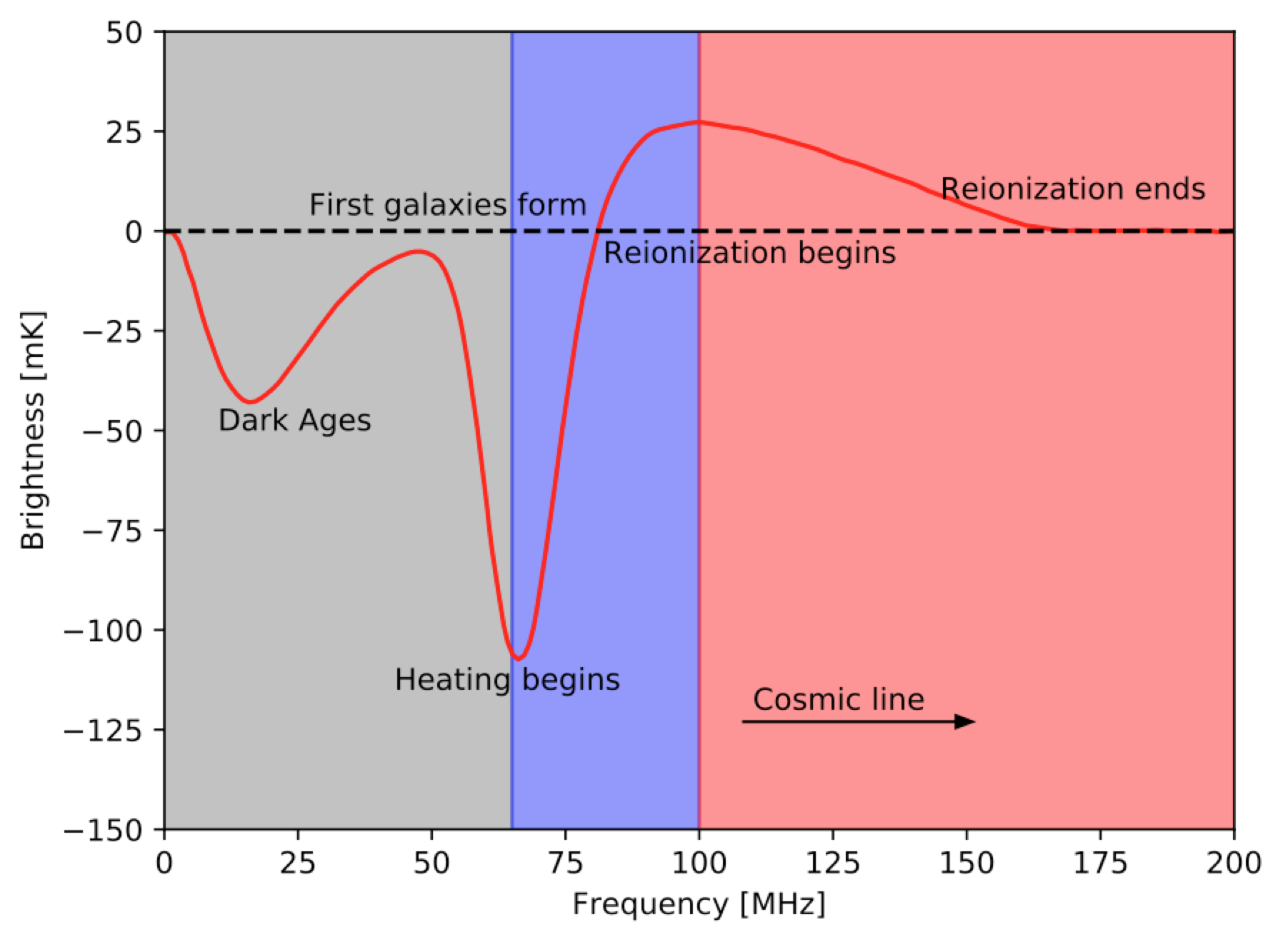REACH IN A NUTSHELL
How did the first luminous objects in the sky form?
How did they shape the Universe?
These are some of the questions REACH will try to answer.
For everyone...
The Big Bang model for the origin and initial evolution of the Universe is by now a familiar and well studied research field. The subsequent, late time, evolution of stars and other celestial objects over billions of years is perhaps even better understood. Less is known, however, about the time between these periods (from about 0.35 to 1 billion years after the Big Bang). During this time the Universe transitioned from being a vast volume filled with a cooling neutral gas to become the realm of cosmic objects that we can now observe from Earth.
At the beginning the Universe was filled with a hot, dense fog of ionized gas until the continued expansion and cooling allowed electrons and protons to combine and form the first neutral atoms, eg. hydrogen. Eventually, the neutral matter clumped together under the effects of gravity, providing the conditions for nuclear fusion to occur, leading to the birth of the first stars and galaxies (period known as the Cosmic Dawn). Subsequently, these objects heated and re-ionised the surrounding hydrogen in the Universe during the Epoch of Re-ionization.
REACH will try to open a window to these early epochs of the Universe by observing radio signals naturally emitted by hydrogen. Hydrogen was the raw material forming the very first stars but also these same hydrogen clouds filling the Universe at the time stop us from directly observing the light from these first stars. Thus, we aim to look at these stars through their interaction with the hydrogen clouds in the same way one would infer a landscape by looking at the shadows in the fog covering it.
For the keen astronomers...
The first stars and galaxies formed some time after the epoch of cosmic recombination (when the Cosmic Microwave Background formed ~378,000 years after the Big Bang at a redshift (z) of ~1100) and before the current 'realm of the galaxies' that we can see today (~1 to 13.7 billion years after the Big Bang). The radiation from these first luminous sources heated and re-ionized the neutral hydrogen that pervaded the primordial Cosmos. Probing these epochs, the 'Dark Ages' before the first galaxies, through cosmic re-ionization and first new light in the Universe, represents the frontier in studies of cosmic structure formation. Neutral hydrogen has a rest wavelength of 21 cm and by observing at low radio frequencies we can study directly its red-shifted radio emission (and absorption) from the gas clouds that were the raw material that formed the first luminous cosmic structures at these early epochs. This is considered to be one of the prime tools to study these epochs given the difficulty to observe these early objects at shorter wavelengths. While the future SKA telescope will aim to do full tomography of the hydrogen emission from the Cosmic Dawn (CD) and the Epoch of Re-ionization (EoR), an in principle simpler way to attempt the detection and study of this signal aims to observe the monopole emission (averaged from all directions in the sky, i.e. global, see Fig. 1) through cosmological time, red-shifted from 21-cm to a few meters due to the expansion of the Universe, with a stand alone radiometer system.
REACH is the Radio Experiment for the Analysis of Cosmic Hydrogen. It is an antenna radiometer aiming to detect and analyse the redshifted radio emission (and absorption) from the 21-cm line.
The team has designed the system over the last 2 years and is now committed to its construction, deployment and operation, starting in early 2021.



